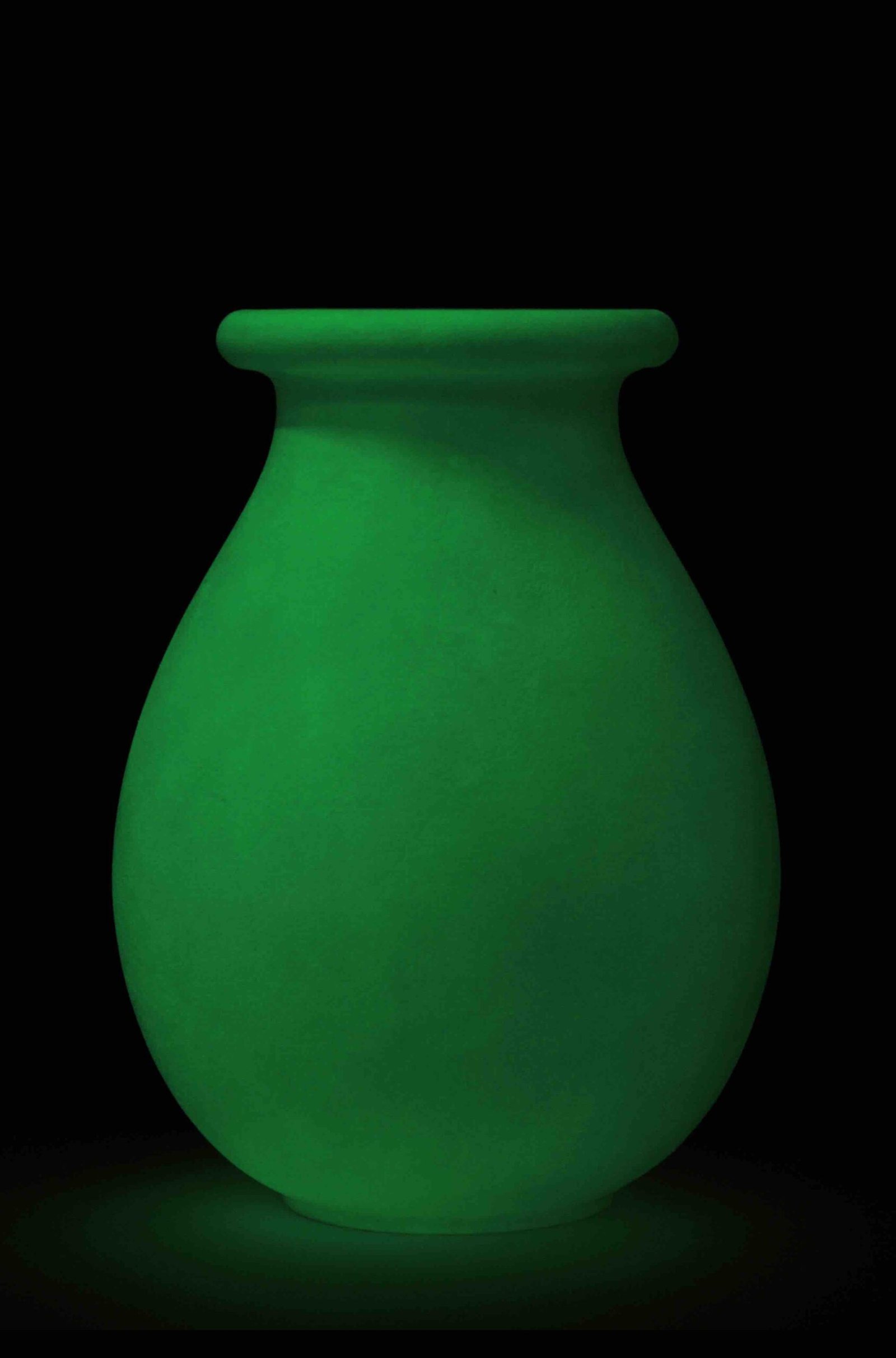5779. 2/12 – Alberto Garutti
09.10.2018 – 06.11.2018
Alberto Garutti
Idria, Tulipaniera and Giara, 2009
from the series Che cosa succede nelle stanze quando gli uomini se ne vanno?, 1993-2018
ceramic, phosphorescent varnish
variable size
“I think about the house when it’s not inhabited: I imagine that objects, things, furniture, which saw day and night light, heard sounds and noises coming from places nearby, the telephone ringing in the room […]. When the exhibition space is closed, the lights go down and everybody leaves, some furniture, tables, chairs, and vases in the exhibition space start to shine because they are covered with fluorescent paint. These domestic and everyday objects camouflage themselves in the space of the gallery, so that they are not recognized as art. The spectator will see them as simple objects for furnishing […]. The artwork can only be imagined, thought of, awaited” – Alberto Garutti.
Part of the series started in 1993, with Idria, Tulipaniera and Giara, the artist appropriates domestic objects from Liguria’s tradition in order to continue his subtle critical analysis of exhibiting systems. The title of the series, Che cosa succede nelle stanze quando gli uomini se ne vanno? [What happens in rooms when the people have left?] appears as a true manifesto: the artist creates a family of works which fruition is never complete, which appearance is conceived for the moments in which is ‘deactivated’. In other words the work shines, conceptually and physically, when it is not observed, when it is deprived from its spectatorship. Therefore Alberto Garutti modifies the public’s perception of the work: “It can only be imagined, thought of, awaited”. The work of Garutti is unveiled through this immaterial tension, for him the work is realized only with the encounter with the spectator and a patient effort is demanded in order to look for it.
In this case, perfectly in tune with the premises of 5779 and its desire to dismantle specific rules of exhibition making, the work of Alberto Garutti lives in a sort of “exhibition eclipse” due to the fact that its context, BUILDINGBOX, allows to see his works also when they are usually not visible.
BUILDINGBOX is an independent space within the premises of BUILDING, characterized by its own unique program. The opening project, curated by Nicola Trezzi, opens on the week of Rosh HaShana, which is the beginning of the new year – the year 5779, as the title says – according to the Hebrew calendar.
Following these premises, a window gallery which is visible 24/7, and a calendar which consists of 12 months (Nisan, Iyar, Sivan, Tammuz, Av, Elul, Tishrei, Marcheshvan, Kislev, Tevet, Shevat, and Adar), 5779 is a group exhibition in which several artworks are not present next to each other but rather one after the other. The structure of the calendar – day after day, month after month, year after year – becomes the guideline for the presentation of artworks by several artists; in doing so, this structure transforms the essence behind group exhibitions, from coexistence and juxtaposition to linearity and procession.
Furthermore, this specific format deconstructs the very core of the group exhibition format, which is, by definition, an exhibition in which several artworks, by several artists, are presented next to each other in a confined space and for a specific amount of time. With 5779 the idea of a group exhibition in which works of art by several artists appear, in the same space, one after the other – substituting one another, replacing one another – suggests an inversion in the equation at the base of exhibition making. Rather than rooting exhibition making into space, as it usually happens, this time the exhibition is rooted in time rather than space.







